导航栏
"QAIT" company specializes in providing a wide range of power plant consulting services, including solar power plants, thermal power plants, wind power plants, hydropower plants, nuclear power plants, as well as industrial small and medium-sized power plants, gas & heavy oil power plants, etc. With its professional capabilities, it can provide comprehensive and high-quality consulting support for the planning, construction, and operation of various power plant projects.
1.Power Plants Overview:
"Power plant", namely power generation plant, also known as power station, is a factory that converts various primary energy sources contained in nature into electric energy (secondary energy).
2.The Main Types of Power Plants and Their Advantages and Disadvantages:
(1)Thermal power plant
Principle: It uses combustibles (such as coal, petroleum, natural gas, etc.) to burn and generate heat energy, heating water into high-temperature and high-pressure steam. The steam pushes the steam turbine to rotate, thereby driving the generator to generate electricity. The energy conversion process is chemical energy → thermal energy → mechanical energy → electrical energy.
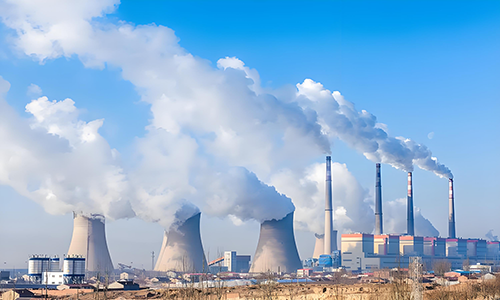
Thermal power plant
Advantages: Flexible layout, can be built near the load center, can quickly respond to changes in power demand, mature technology, and relatively high power generation efficiency.
Disadvantages: It consumes a large amount of fossil fuels, generates a great deal of pollutants such as carbon dioxide, sulfur dioxide, nitrogen oxides, etc., causing environmental pollution. Moreover, fossil fuel resources are limited and face the problem of depletion.
(2)Hydropower plant
Principle: It utilizes the kinetic energy and potential energy of water flow. By building dams to raise the water level and form a head, the water flow is introduced into the water turbine through the diversion channel, driving the water turbine to rotate, converting the water energy into the rotational mechanical energy of the water turbine. Then, the generator connected to the water turbine converts the mechanical energy into electrical energy. The energy conversion process is water energy → mechanical energy → electrical energy.
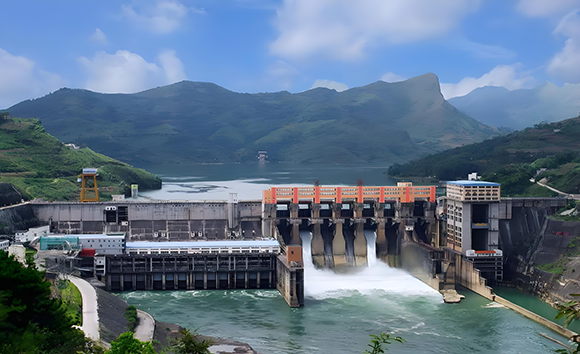
Hydropower plant
Advantages: It is a clean and renewable energy source, with low operation costs, high power generation efficiency, and good adjustability. It can start and stop quickly and adjust the load, and has comprehensive benefits such as flood control, irrigation, shipping, aquaculture, and tourism.
Disadvantages: High construction investment and long construction period, high requirements for the geographical environment, requiring suitable rivers and water heads. It may have a certain impact on the ecological environment, such as affecting fish migration and changing river ecology.
(3)Nuclear power plant
Principle: It uses the fission reaction of nuclear fuel (such as uranium) in a nuclear reactor to release enormous energy, generate steam, and the steam drives a steam turbine to drive a generator for power generation. The energy conversion process is nuclear fission energy → thermal energy → mechanical energy → electrical energy.
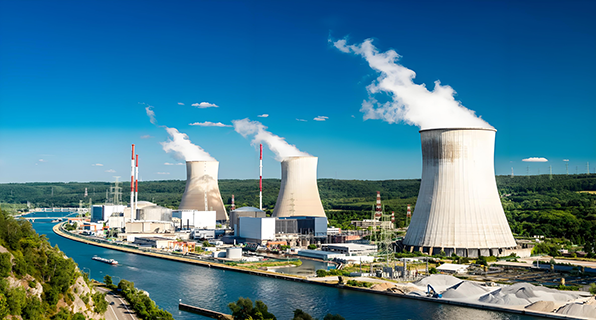
Nuclear power plant
Advantages: Nuclear energy has a high energy density and requires less fuel consumption. The power generation cost is relatively stable. It does not produce greenhouse gases or atmospheric pollutants, causing relatively little impact on the environment.
Disadvantages: High construction costs, strict technical requirements, potential nuclear safety risks, and the disposal of nuclear waste is a challenging problem, which needs to be properly handled to prevent harm to the environment and human health.
(4)Wind power plant
Principle: It uses the wind to blow the blades of the windmill to rotate. After the rotation speed is increased by the speed increaser, it drives the generator to generate electricity, converting wind energy into mechanical energy, and then into electrical energy.
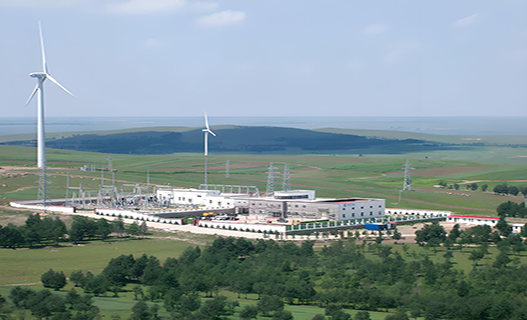
Wind power plant
Advantages: Wind energy is a clean and renewable energy source. The cost is gradually decreasing, and the construction period is short. It can be built in remote areas or at sea without occupying a large amount of land resources, and has little impact on the environment.
Disadvantages: Wind energy has a low energy density and the capacity of a single unit is limited. The randomness and instability of wind lead to significant fluctuations in power generation, requiring solutions to energy storage and grid connection issues. It may also have a certain impact on the ecological environment, such as affecting bird migration.
(5)Solar power plant
Principle: It uses solar panels to directly convert solar energy into electricity, namely photovoltaic power generation; or heats feed water through a heat collection device and a heat exchanger to turn it into steam, driving a steam turbine generator to generate electricity. The former is the direct conversion of light energy into electrical energy, while the latter is an indirect conversion process of light energy → thermal energy → mechanical energy → electrical energy.
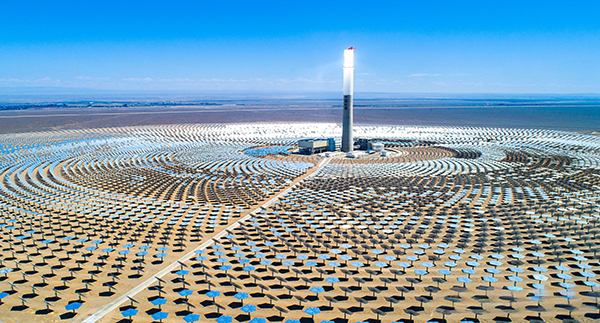
Solar power plant
Advantages: Solar energy is abundant, clean, pollution-free, and renewable. It has low maintenance costs, is suitable for construction in sunny areas, and can be distributed in a decentralized layout to reduce transmission losses.
Disadvantages: Low energy density, large land occupation, significant impact of weather and seasons on power generation efficiency, inability to generate electricity at night and on rainy days, requiring the configuration of energy storage equipment or complementarity with other power sources.
(6)Geothermal Power Plant
Principle: It uses the geothermal resources stored in the earth's interior to generate electricity. Geothermal energy is generally concentrated in the edges of tectonic plates. It can generate electricity by using dry superheated steam and high-temperature water, and can also generate electricity through binary cycle power generation equipment using medium-temperature water. The basic principle is similar to that of thermal power generation. According to the principle of energy conversion, geothermal energy is first converted into mechanical energy, and then mechanical energy is converted into electrical energy.
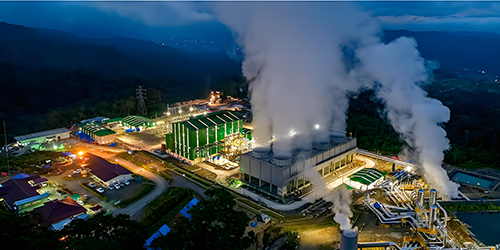
Geothermal Power Plant
Advantages: Geothermal resources are renewable, with low operation costs. They are not dependent on weather conditions, enabling stable power generation. They cause less environmental pollution. Developing geothermal resources can also drive the development of local tourism and other related industries.
Disadvantages: The distribution of geothermal resources is restricted, with great difficulties in exploration and development. The upfront investment is high. Underground hot water and steam may contain harmful substances, requiring proper treatment of wastewater to prevent environmental pollution.